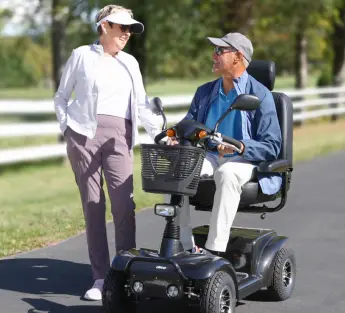Wheelchair Cushion Maintenance
Extend the life of your cushion and ensure the protection of your skin. Inspect and clean your cushion regularly.
|
Given the price of some wheelchair cushions on the market today, one would think that they should last at least as long as the wheelchair, if not longer. I have a 10-year-old couch and it looks brand new, but I don’t sit on it every day for 12 hours. Nor do I put the cushions in the trunk of my car in 90-degree heat or sub-zero temperatures. Because a wheelchair cushion takes a beating, it should be treated like a part of your wardrobe. The cover should be washed and the cushion should be cleaned and inspected regularly. Proper wheelchair cushion maintenance begins with the inspection. Foam, gel and viscous fluid cushions should be checked monthly and air cushions should be checked weekly.Look for signs of the cushion fitting improperly on the wheelchair. Just because the cover is facing in the right direction doesn’t mean the cushion inside it is. Unfortunately, upside down and backward cushions are common. This is especially important if the cushion is custom contoured to match your skeletal structure. Skin breakdown, pain and orthopedic deformities can result. Inspection Steps
A leak of viscoelastic fluid or water is evident by the presence of the fluid. Cushions that use viscoelastic fluid indicate cushion failure by the separation of the fluids creating someareas that are harder or softer than others do. Viscoelastic fluid should be kneaded daily to reposition the fluid and prevent pockets under the weight-bearing surfaces. Leakage in air cushions may not be as obvious. Most often, a cushion will develop a slow leak rather than being punctured. Therefore, an air cushion should be checked weekly to insure that it is properly inflated and the bony prominences are supported. Placing one’s hands under your ischial tuberosities and sacrumwill help determine proper inflation. All owners of air cushions should know how to check the cushion’s inflation. Please refer to your owner’s manual or contact your therapist. If punctured, air cushions can be repaired with a patch once the hole is located. If the inflation valve stem malfunctions, it must be replaced. Manufacturers will often replace this and repair leaks for a fee. Remember that wheelchair cushions are an important piece of equipment for all wheelchair users. Because cushions typically do not last as long as a wheelchair, they should be inspected frequently. Foam, gel and viscous fluid cushions should be checked monthly and air cushions should be checked weekly. Some cushions are a combination of materials such as foam and viscoelstic fluid or foam and gel or foam and air. Each product should be inspected separately. The only way to properly inspect a cushion is when you are out of the chair, so the cushion and cover can be removed. |





 Contact Us
Contact Us
 M-F 9am - 5pm ET
M-F 9am - 5pm ET
 Request parts
Request parts Request Service
Request Service